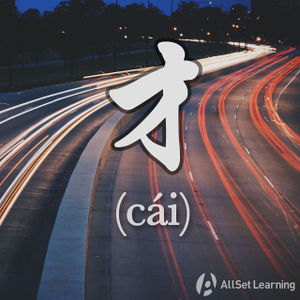Difference between revisions of "Comparing "cai" and "jiu""
| Line 37: | Line 37: | ||
* 他 两 年 以前 <em>就</em> 去世 了。 | * 他 两 年 以前 <em>就</em> 去世 了。 | ||
</div> | </div> | ||
| + | |||
| + | == 就 is used to express earliness == | ||
| + | [[Expressing earliness with "jiu"|就 indicates that something has occurred earlier than expected]] | ||
| + | |||
| + | === Structure ==== | ||
| + | |||
| + | <div class="jiegou"> | ||
| + | Subject + Time + 就 + Verb + Object | ||
| + | </div> | ||
| + | |||
| + | === Examples === | ||
| + | <li class="o"> | ||
== Dialog == | == Dialog == | ||
Revision as of 09:53, 30 November 2012
-
Level
-
Similar to
-
Used for
-
Keywords
| This article is a stub. Editors can help the Chinese Grammar Wiki by expanding it. |
都是和时间表达有关系的副词,用在动词前面。但是表达的感情色彩不一样。
Contents
才
才”表示说话者认为动作发生的时间很长,有时候可以表示“焦急、不耐烦、生气”等感情。
Structure
才 + Verb
Examples
- 我 等 了 两 个 小时 才 买 到 票。
- 他 迟到 了 半 个 小时 才 来。
就
“就”是表示说话者认为动作发生的时间很短,有时候可以表示“惊喜、意外、惋惜”等感情。
Structure
就 + Verb
Examples
- 你们 这么 早 就 下班 了?
- 他 两 年 以前 就 去世 了。
就 is used to express earliness
就 indicates that something has occurred earlier than expected
Structure =
Subject + Time + 就 + Verb + Object
Examples
Dialog
- A: 你 怎么 才 来?
- B: 我 八点 就 出门 了,路 上 堵车 我 也 没 办法。



